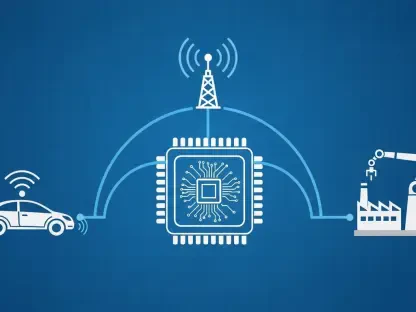Imagine a state often overshadowed by tech giants like Silicon Valley suddenly emerging as a powerhouse for cutting-edge innovation, with New Jersey, known more for its historical contributions than its modern tech scene, on the cusp of a transformation through Nokia’s ambitious Helix Hub project in New Brunswick. This 370,000-square-foot facility, under construction as part of Nokia Bell Labs’ vision, promises to revolutionize the region’s technological landscape. This roundup article gathers diverse perspectives from industry leaders, state officials, and economic analysts to explore whether this development can truly redefine tech innovation in the Garden State. By examining opinions on its research potential, economic impact, and strategic significance, this piece aims to provide a comprehensive view of what the Helix could mean for New Jersey’s future.
Diverse Perspectives on the Helix Hub’s Vision
Research Frontiers: Quantum and 6G on the Horizon
Insights from technology sector commentators highlight the Helix Hub as a potential epicenter for groundbreaking advancements. With a focus on quantum computing and 6G technology, the facility is seen as a bold step toward maintaining global competitiveness in telecommunications. Many industry observers note that Nokia’s commitment to completing significant 6G research by the hub’s anticipated opening between 2027 and 2028 positions it as a leader in next-generation connectivity.
However, not all opinions are uniformly optimistic. Some tech analysts express concern over the extended timeline, suggesting that the rapid pace of technological change could outstrip the project’s completion schedule. They argue that while the focus on quantum exploration is commendable, the practical applications may remain elusive for years, potentially dampening early momentum for the hub.
A contrasting view comes from academic circles, where there’s enthusiasm for the long-term vision. Scholars from nearby institutions emphasize that such ambitious projects, even if delayed, lay critical groundwork for future breakthroughs. Their perspective underscores the importance of patience in fostering innovation that could redefine entire industries.
Economic Impact: A Boon or a Burden for New Brunswick?
Economic analysts provide varied takes on how the Helix Hub might transform New Brunswick into a tech nexus. Optimists point to the relocation of 1,000 Nokia employees from Murray Hill to the new site as a direct boost to local employment. They also highlight the strategic proximity to revitalized infrastructure, such as the New Brunswick railway station, as a factor that could attract additional businesses and talent.
On the flip side, some community advocates raise concerns about unintended consequences. They caution that rapid development could lead to rising costs of living, potentially displacing long-term residents. There’s a shared worry among these voices that the economic promises tied to the hub must be balanced with initiatives to protect local communities from negative fallout.
State officials, meanwhile, offer a hopeful outlook, describing the project as a catalyst for broader regional growth. Their perspective focuses on the potential for job creation beyond Nokia itself, with ancillary industries possibly flourishing by the late 2020s. This view paints the Helix as a cornerstone for positioning New Jersey as a competitive player in the national tech economy.
Strategic Location: Redefining the Value of Physical Hubs
Opinions on the Helix Hub’s location reveal a debate about the relevance of physical innovation centers in a digital era. Tech consultants argue that the strategic placement near major universities like Rutgers and Princeton offers unparalleled access to talent and collaborative opportunities. They believe this could make New Brunswick a magnet for young innovators.
Conversely, some digital transformation experts question whether such large-scale physical facilities are necessary in an age of remote work. Their stance is that investment in virtual collaboration tools might yield faster results compared to a brick-and-mortar hub with a completion date still years away. This skepticism challenges the notion that location alone can drive innovation.
Regional planners counter this by emphasizing the symbolic and practical value of a centralized hub. They argue that a state-of-the-art facility like the Helix can foster a sense of community and shared purpose among researchers and businesses, something virtual platforms often struggle to replicate. This perspective suggests that physical spaces still hold unique potential for sparking creativity.
Collaboration and Legacy: Building on Nokia’s History
Views on the Helix as a collaborative venture reveal strong support from state and corporate stakeholders. Government representatives have lauded the project as a “second chapter” for both Nokia and New Jersey, pointing to its alignment with broader goals of technological leadership. This optimism centers on how the hub could attract global talent and investment to the region.
Business analysts add to this narrative by comparing the Helix to other regional tech initiatives across the country. They suggest that Nokia’s legacy of innovation provides a strong foundation for success, potentially setting a benchmark for how legacy companies can reinvent themselves through strategic projects. Their insights focus on the ripple effects that could extend to smaller firms and startups by 2028.
A more cautious opinion emerges from economic forecasters who stress the need for sustained collaboration between public and private sectors. They warn that without continuous support and funding, the Helix risks becoming a symbolic gesture rather than a functional driver of progress. This viewpoint underscores the importance of long-term commitment to realizing the hub’s full potential.
Key Takeaways from the Helix Hub Discussion
Reflecting on the myriad opinions surrounding Nokia’s Helix Hub, several themes emerge as central to its potential impact. The focus on quantum computing and 6G technology positions the facility at the forefront of global tech trends, though timelines and practical outcomes remain points of contention. Economically, the hub promises growth for New Brunswick, yet community concerns about displacement highlight the need for balanced development strategies.
From a strategic standpoint, the debate over physical versus digital innovation hubs reveals a broader tension in the tech world, with the Helix’s location seen as both an asset and a potential limitation. Collaborative efforts and Nokia’s historical legacy are widely viewed as strengths, but experts agree that sustained investment and policy support will be critical to success. These insights collectively paint a picture of cautious optimism for New Jersey’s tech future.
Reflecting on the Helix Hub’s Potential Path Forward
Looking back, the discussions around Nokia’s Helix Hub in New Brunswick capture a spectrum of hope and concern among industry leaders, analysts, and community voices. The consensus points to a transformative opportunity, tempered by challenges of timing and execution. For stakeholders, actionable next steps involve fostering partnerships between Nokia, local businesses, and universities to build a robust talent pipeline. Additionally, policymakers are urged to prioritize community-focused initiatives to mitigate economic disparities. As New Jersey aims to carve out its place in the tech landscape, continued dialogue and investment stand out as essential to turning the Helix vision into a lasting reality.









